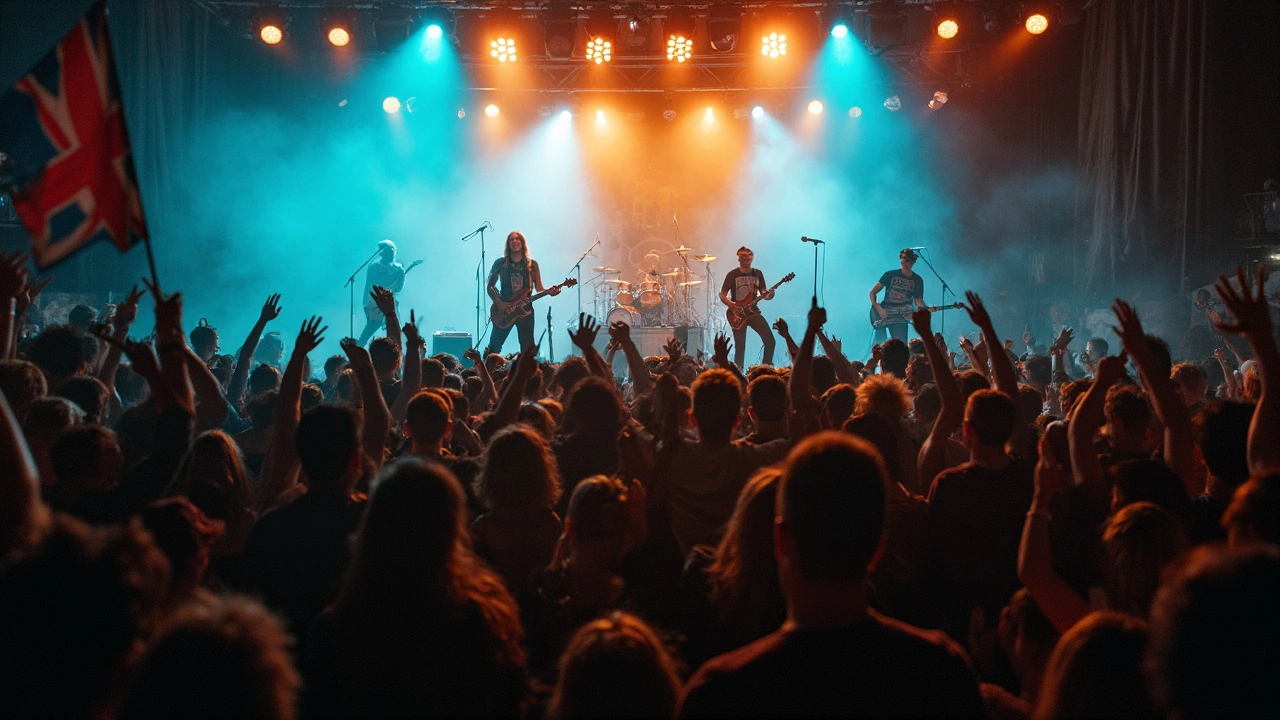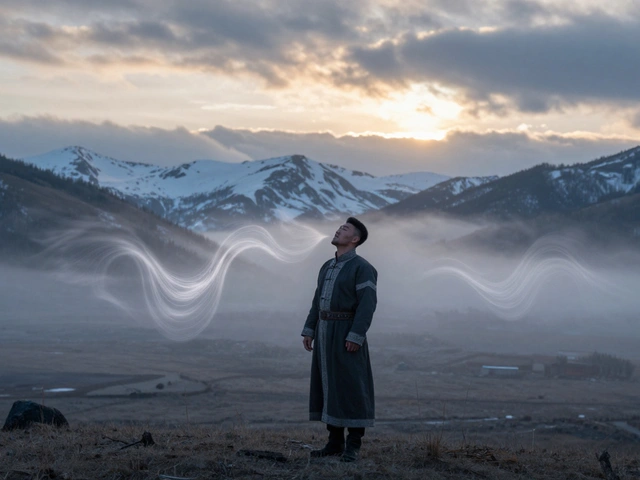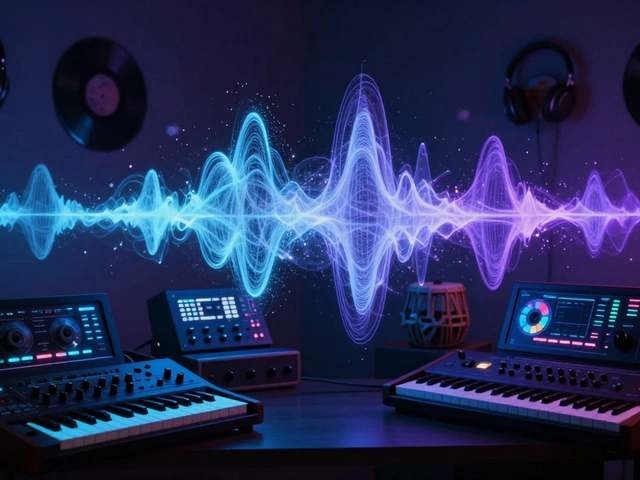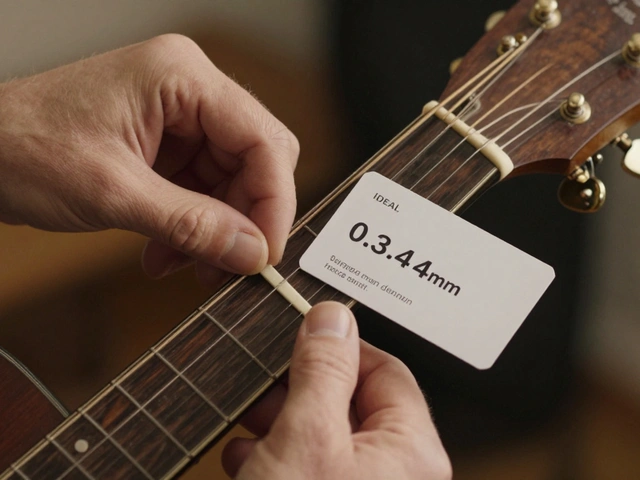You can't capture the rush of live rock music from a pair of cheap headphones. Something happens the moment the band hits that first note, and you’re surrounded by people who know every word. There’s a crackle in the air—part excitement, part unpredictability—that just doesn’t exist on a Spotify playlist.
Live rock gigs are more than loud guitars and sweaty crowds. They’re about connection. You get the real, unfiltered side of the band—mistakes, surprises, raw emotion. A drum solo you never saw coming, a last-minute cover song, or the frontman telling a story that never made it to their album. It’s a one-night-only show written for that exact crowd.
If you’re aiming to get more out of your concert nights, it’s worth showing up early to feel the buildup. Watch the change in the crowd as anticipation grows. Even picking your spot in the venue matters—stand close to the speakers for that heart-thumping bass, or hang back to watch the whole crowd move together. No two shows feel the same, and that’s what keeps people coming back.
- Why Live Rock Performances Hit Different
- The Crowd Factor: Energy You Can’t Fake
- Behind the Scenes: What Makes a Show
- Famous Rock Concert Moments
- Tips for Getting the Most Out of a Gig
- From Audience to Memory: Why It Sticks
Why Live Rock Performances Hit Different
There’s a reason die-hard fans will travel for hours to see a real rock gig, while others settle for headphones at home. The top thing that sets live rock apart is how unpredictable it is—no one really knows what’s coming next. Bands feed off the crowd, change their setlists on the fly, and give versions of songs you’ll never get in a studio. For example, Pearl Jam is famous for never playing the same setlist twice, and Bruce Springsteen often stretches concerts past three hours, leaving everyone gutted and amazed.
Here’s one cool thing: you get the full blast of instrument energy. That wall of sound? It’s not just loud. Scientists actually measured heart rates at live concerts and found they jump up to the same level as a mild workout. So, if you’ve felt breathless after a mosh pit, now you know why.
The sound system alone at live venues can make a difference too. Consider this: The Rolling Stones' 2006 "A Bigger Bang" tour involved over 1,000 speakers and required more than 250 tons of equipment. That’s not something you get at home, even with the fanciest Bluetooth speaker.
| Concert Factor | Studio Recording | Live Show |
|---|---|---|
| Energy Level | Controlled | Spontaneous, raw |
| Interaction | None | Real audience feedback |
| Sound Quality | Sterile, perfect | Powerful, all-encompassing |
| Memorable Moments | Rare | Frequent, unique |
With a live rock music show, it’s not about perfection. It’s about the rush, the loud mistakes, that moment when the crowd drowns out the band. This kind of intensity just can’t be bottled and replayed.
- If you’re new, try starting with a band you already love—it’s the best way to feel the difference.
- Tune in to the connection between the group and the crowd. You’ll notice things that will change how you hear your favorite songs back at home.
- Stay off your phone for a few songs. The best bits happen when you’re paying attention in the moment.
The Crowd Factor: Energy You Can’t Fake
Nothing changes the vibe of a live rock music show like the crowd. You can feel it right as you walk in, even before the first guitar string is plucked. Researchers at McGill University once found that people listening to music together in a crowd get a dopamine boost, making them feel happier and more connected compared to listening alone. That’s not just a guess—it’s brain chemistry in action.
Fan energy can turn a decent show into an unforgettable night. Think about Queen at Live Aid in 1985. Over 72,000 people packed Wembley Stadium, and you could see their energy feeding right back to Freddie Mercury. He played off the crowd, making that set one of the most legendary rock moments ever. To this day, most musicians say they get a bigger high from audience reactions than from anything else.
Why does this matter for you? Because being part of a rock crowd puts you in the center of the action. You’re not just there to watch—you’re in it with everyone else. When the band shouts, "Hands up!", and everyone jumps at once, it’s impossible not to get swept along.
- Sing along if you know the words. Nobody cares if you’re off-key.
- Get involved when the band calls for crowd participation—it’s half the fun.
- If you see a mosh pit forming and it’s not your thing, step back and stick to the sides.
- Smile or nod at the strangers around you. You’re all there for the same love of music.
Here’s a quick look at what makes crowds so powerful at concerts:
| Factor | Impact at Concerts | Example/Stat |
|---|---|---|
| Size | Bigger crowds mean bigger energy, but even small venues can be intense. | Foo Fighters set a record in 2023 with 90,000 fans at Wembley. |
| Chants & Crowd Noise | Roars and singalongs amp up both the band and the audience. | Queen’s "Radio Ga Ga" at Live Aid—clapping from 70,000. |
| Audience Interaction | Bands that talk or joke with the crowd build instant connection. | Blink-182 is known for goofing off on stage with fans. |
If you want that extra burst of energy, stand close to the action. But even at the back, you’ll still catch the buzz. The mix of anticipation, excitement, noise, and call-and-response makes live rock gigs way more than just music.
Behind the Scenes: What Makes a Show
Most folks just notice the lights, the sound, and the killer guitar riffs, but there’s a mountain of work behind every live rock music show. Setting up a concert is honestly more like planning a small city for a night. You’ve got stage crews, sound engineers, lighting techs, vendors, security, and tons of equipment all needing to run in sync.
Setting up for a major rock gig takes hours. For example, AC/DC’s 2015 Rock or Bust World Tour was moving 1,100 tons of gear at each stop, using about 40 trucks. It’s not just the big acts, though—local shows often rely on dedicated teams, sometimes just the band and a handful of friends hustling to set up amps and lights before doors open.
- Soundchecks happen hours before fans arrive. Every instrument gets checked—some bands are pretty rigid about this, others are total jokers.
- Lighting teams program thousands of cues for modern shows. The light show in a Foo Fighters concert might have over 200 programmed sequences.
- Stage crews double-check cables, tune guitars, set up the drum kit, and often get only a ten-minute window to swap equipment between opening acts and headliners.
All this action affects what you see and hear as a fan. Sometimes you’ll notice a minor glitch—a mic cuts out or an amp hums—and that’s because there are a hundred moving parts behind the scenes.
| Task | Average Time per Show |
|---|---|
| Stage Setup | 4-8 hours |
| Soundcheck | 1-2 hours |
| Lighting Programming | 2-4 hours |
| Security Briefing | 30-60 minutes |
| Load-Out (after show) | 2-4 hours |
If you’ve ever wondered why tickets cost what they do, now you know—it's not just about paying the band, but an entire crew making each night look and sound spot-on. Next time you’re at a gig, spare a thought for the folks wrestling cables backstage so you get that flawless show up front.
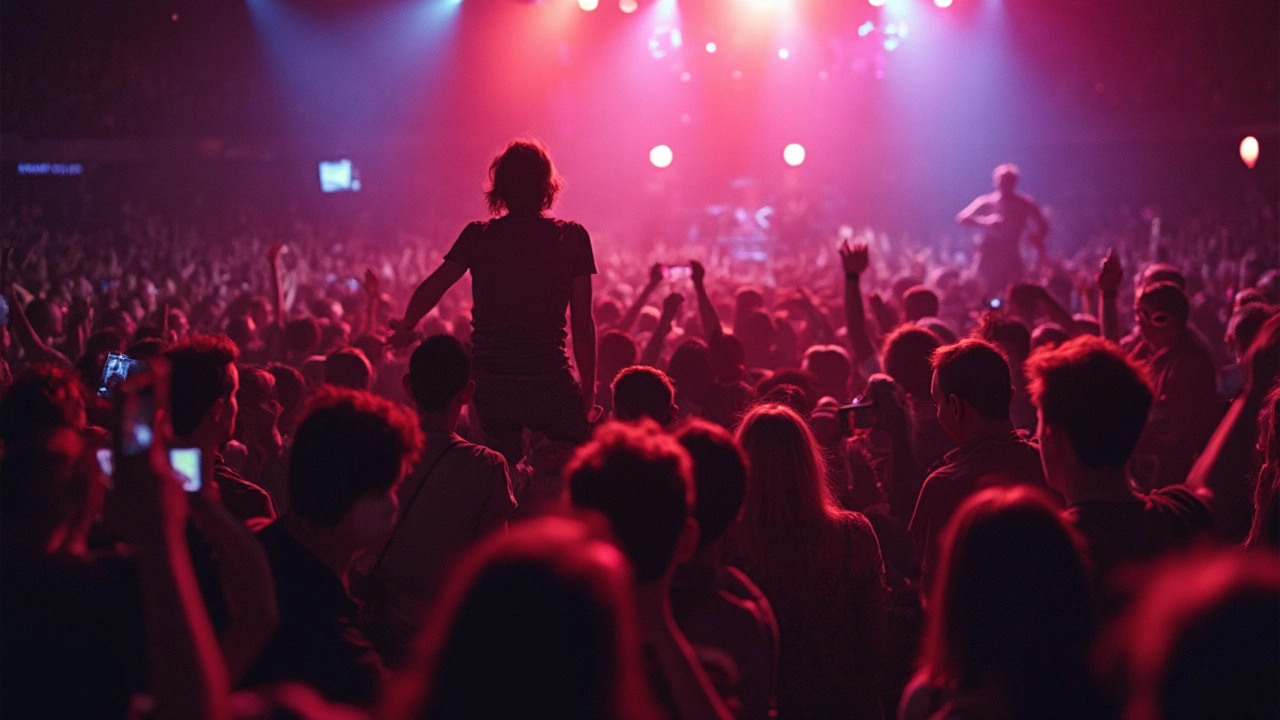
Famous Rock Concert Moments
Some live rock gigs go way beyond just music—they become stories people tell for decades. These concerts didn't just make headlines; they shaped how we see live rock music today.
If you ever chat with hardcore fans, Woodstock 1969 pops up fast. More than 400,000 people showed up for three days of peace, love, and music in a muddy New York field. Jimi Hendrix’s wild, feedback-laced version of the U.S. national anthem? That’s a moment burned into rock history. The event even ran so late, Hendrix didn’t go on until 8 a.m.—but no one cared, because he brought the house (well, field) down.
Fast forward to 1991 in Moscow: Metallica played in front of a jaw-dropping 1.6 million fans after the Iron Curtain fell. Free and open-air, it was the country’s first heavy metal concert and had armed soldiers keeping an eye on the crowd. For a country just tasting Western music, it was total chaos—in a good way.
Queen’s Live Aid show in 1985 remains legendary. In only 20 minutes, Freddie Mercury and the band managed to turn a treetop stadium into a roaring, unified crowd. Queen’s energy was so contagious that even people watching on TV (an estimated 1.9 billion worldwide) felt a part of it.
- U2’s 1997 PopMart Tour brought the biggest LED screen ever used at a concert, giving fans a first taste of big visuals.
- The Rolling Stones played in Cuba in 2016—a first after decades of rock music being banned there. Half a million fans packed out Havana, making it one for the books.
- Nirvana’s 1993 MTV Unplugged gig turned the volume down, but emotions up. Cobain’s raw delivery made even the loudest fans hang on every note.
To really see how these moments stack up, check out this quick comparison of crowd sizes and reach:
| Concert/Event | Year | Estimated Audience |
|---|---|---|
| Woodstock | 1969 | 400,000 |
| Metallica, Moscow | 1991 | 1,600,000 |
| Queen, Live Aid | 1985 | 72,000 in stadium, 1.9 billion TV viewers |
| Rolling Stones, Havana | 2016 | 500,000 |
| Nirvana, MTV Unplugged | 1993 | Small studio audience, millions on TV |
Moments like these remind us that an epic gig isn’t just about the music. It’s how artists connect with the crowd, push boundaries, and sometimes, even make history. When you’re there for one of these, you know you’ll have a story for life.
Tips for Getting the Most Out of a Gig
There's no secret handshake—just a few solid tips to level up your live rock music experience. It pays to plan a little, because concerts can get chaotic fast.
- Buy tickets early: Popular gigs sell out shockingly fast, sometimes within minutes of going live. Set calendar alerts for ticket drops–especially for bands with a reputation for mind-blowing live shows like Foo Fighters or The Killers.
- Check the venue layout: Some venues have great balconies, while others are legendary for their floor energy. Google Street View sometimes lets you peek inside, or look up fan photos and seating charts on Reddit so you don't get stuck behind a pillar.
- Dress smart: You will get hot, even at winter gigs. Layers work best. Closed-toe shoes are a must—there’s always someone who accidentally stomps on your foot during the opening riff.
- Pack light: Most places only allow small bags. Bring cash, ID, earplugs (seriously, your future self will thank you), and your phone. Leave anything you don’t want soaked in beer at home.
- Arrive early—or late, depending on what you want: If being right up front is your goal, show up before doors open. If mingling in the back with easier access to the bar is more your thing, you can roll in closer to set time. Remember, festival-style standing areas can get packed fast.
- Hydrate, but not too much: You don’t want to miss the best song running for the bathroom. Water stations and bars almost always have long lines, so plan your drinks between openers or slow songs.
- Film a little, live a lot: Snap a quick photo for memories, then pocket your phone. You’ll take in more and get a real feel for the atmosphere if you’re not staring at your screen the whole time. Some bands even ask crowds to keep phones away–Jack White’s 2022 tour was famous for this, using locked pouches to make everyone really present.
- Know the opener: Sometimes the next big thing plays before the headliner. Check out a couple of their biggest songs in advance, and you might just find your new favorite band.
- Set a meeting spot: Venues can be mazes. If you’re going with friends, agree on a landmark to regroup if anyone gets separated. Most people lose cell service when the crowd packs in.
These small moves make a huge difference. Every gig has something unpredictable, but if you’re prepped, you’ll remember the music instead of the headaches.
From Audience to Memory: Why It Sticks
Walk out of a live rock music show and you’ll feel different. The sound rings in your ears, your heart’s still beating fast, and you notice you can remember tiny details—even years later. There’s a reason for that. Your brain gets overloaded with feel-good chemicals when you’re caught up in loud, real-time music, especially when surrounded by other excited fans. According to a 2016 study from Goldsmiths, University of London, people who go to concerts regularly feel happier, and their sense of connection lasts longer than people who just listen to music at home.
It’s not just about the music—it’s the shared high-fives, the chorus shouted by thousands, or the random stranger who helped you crowd-surf. Psychologists call it “collective effervescence,” which just means you get a bigger emotional kick when you experience something big with a group.
Let’s look at how people really remember gigs. Here’s a quick glimpse from a British survey on live music:
| How Long After a Gig Do Fans Remember Specific Moments? | Percentage of Respondents |
|---|---|
| 1 year | 89% |
| 5 years | 71% |
| 10+ years | 53% |
Want those memories to last longer? Here’s a few practical tips:
- Take short videos or snap a couple photos—but focus mostly on being present. You’ll actually remember more that way.
- Write down your favorite setlist moments right after the show. Even a few notes in your phone work.
- Connect with someone you met at the gig. Sharing your post-show buzz cements those moments.
- Grab a piece of merch (like a shirt or guitar pick) to trigger the memory every time you see it later.
Rock concerts stick because they wake you up. When you’re jumping around to a guitar solo, you create a sharp, colorful memory that isn’t just about hearing music—it’s about living through it with a crowd that gets it, too.

